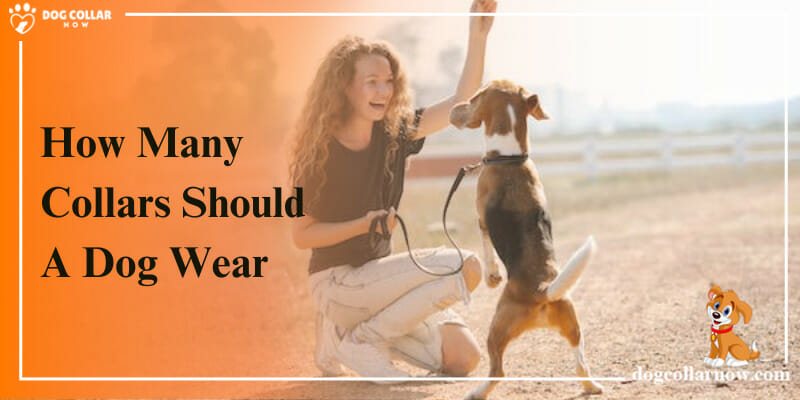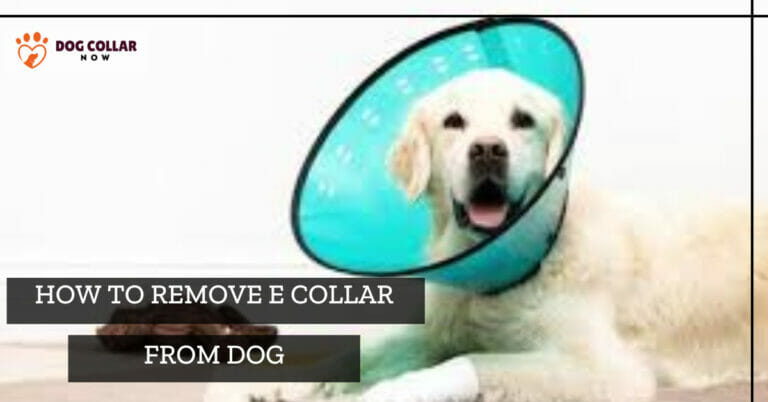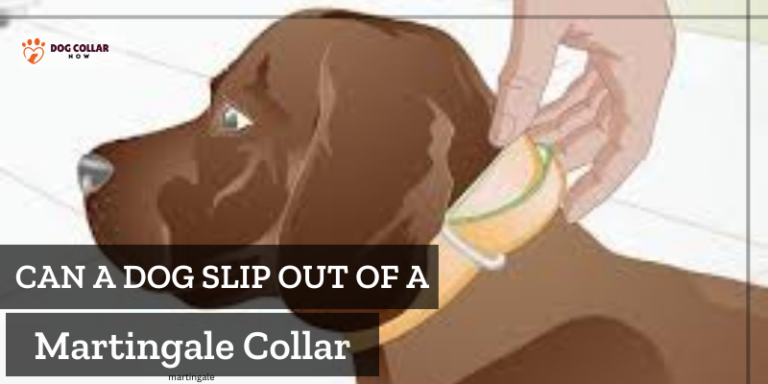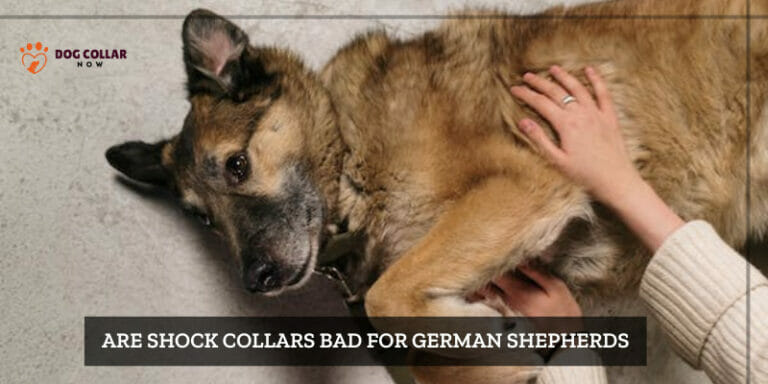How Many Collars Should A Dog Wear – Complete Guide

Welcome to our blog post on a topic that has dog owners everywhere scratching their heads: how many collars should a dog wear? While some dogs are perfectly content with one collar for everyday use, others might benefit from having a few options for specific situations.
Your dog typically needs just one collar for identification and safety. However, consider extra collars for specific activities or training needs to ensure their comfort and well-being.
Let’s delve into the factors to consider when choosing a collar and explore the pros and cons of having your pup sport more than one. So grab a leash, sit back, and let’s get started!
How Many Collars Should A Dog Wear – A Guide
As a pet parent of two dogs, I know how important it is to keep them safe and secure. Here’s my take on how many collars a dog should wear:
The Essential Collar
Alright, here’s the scoop. Most pups rock just one collar – kind of like their favorite T-shirt they wear every day. It should:
- Hug them just right – snug but not too tight.
- Have a shiny tag with their name (because they’re stars ) and your digits (in case they take a surprise stroll).
In my experience, a comfortable, well-fitting collar with a tag featuring your dog’s name and your phone number is key. That way, if they ever decide to go on an unexpected adventure, like my adventurous pup did once, people can easily help reunite you with your four-legged buddy.
Factors To Consider When Choosing A Collar
When it comes to choosing a collar for your dog, there are several important factors that you should consider.
- Size And Breed
- Breed-Specific Needs: Some breeds, like Greyhounds, benefit from wider collars to protect their delicate necks, while smaller breeds may need lighter, thinner collars.
- Fit: The collar should fit snugly, allowing you to slip two fingers between the collar and your dog’s neck.
- Material
- Nylon Collars: Lightweight, affordable, and come in a variety of colors and patterns. Suitable for most dogs, especially if they’re water-loving, as nylon dries quickly.
- Leather Collars: Offer a timeless and sophisticated look. They can be more durable, but require regular maintenance to keep the leather supple.
- Reflective or Illuminated Collars: Great for evening walks, ensuring your pet is visible.
Check on Amazon
- Closure Type
- Buckle Closures: Traditional and durable. More commonly found on leather collars.
- Quick-release/Breakaway Closures: Snap together and apart easily, reducing the risk if the collar gets snagged. Common on nylon collars.
- Special Needs Or Conditions
- Pulling Behavior: A harness or a head halter might be more appropriate than a collar. They distribute the force more evenly and reduce strain on the neck.
- Sensitive Skin or Allergies: Materials like cotton or hypoallergenic synthetics can reduce the risk of irritations.
- Style And Personality
- Colors and Patterns: Collars come in a plethora of designs. Whether it’s a fun pattern or a solid color, there’s likely something that matches your dog’s (or your) personality!
- Matching Sets: Some collars have matching leashes or bandanas for that coordinated look.
- Name Tags and Accessories: Ensure there’s a ring or a space for tags, which can include your dog’s name, your contact info, or even medical needs.
Beyond just aesthetics, the right collar serves many functions, from safety to comfort. When selecting one, keep in mind your dog’s unique needs, physical attributes, and of course, a sprinkle of style!
Pros And Cons Of Multiple Collars
Having multiple collars for your dog can have its advantages and disadvantages. Let’s explore the pros and cons to help you make an informed decision.
| Aspect | Pros | Cons |
| Fashion Statement | Stand out in a crowd! Multiple collars can add a unique flair to your ensemble. | Overdo it, and you might end up looking cluttered or over-styled. |
| Functionality | Two is better than one, right? Multiple collars can offer added warmth on chilly days. | On a warm day, multiple collars could make you feel too hot and suffocated. |
| Layered Look | Achieve a faux layered appearance without the bulk of wearing several garments. | Can appear bulky or awkward if not styled right. |
| Versatility | Switch things up! Fold one collar down and leave another up for varied looks | Too many choices? You might be paralyzed in deciding how to wear collars. |
| Maintenance | More collars can sometimes mean more durability, as the fabric is doubled up. | An increased chance of uneven wear and tear. Plus, they might be trickier to iron or clean. |
| Trendiness | Be the talk of the town! Multiple collars can be a trend-setting fashion statement. | Trends come and go. What’s in today might be out tomorrow, leaving your multi-collar piece outdated. |
| Comfort | When styled right, they can be super comfortable, giving a snuggled feeling. | Too many collars can feel restrictive, especially if you’re not used to the added weight/material. |
Remember that what matters most is providing your furry companion with a safe and comfortable accessory that suits their individual needs!
How Many Collars Is Too Many?
When it comes to dog collars, there’s often a debate about how many your furry companion really needs. Some folks believe a single collar does the job, while others like to have a collection for different situations. So, let’s break it down based on some key factors.
1. Lifestyle And Activities
- If your dog is mainly an indoor sweetheart who only steps out for walks or safe play, one collar should suffice.
- However, if your dog is an outdoor enthusiast who loves hiking or swimming, consider specialized collars designed for these adventures.
2. Behavior And Training Needs
- Training or behavior correction can call for various collar types. A standard buckle collar for regular walks, a martingale collar for training sessions, or a head halter for specific needs can provide better control.
3. Comfort And Safety
- Some dogs might have sensitivities or allergies to certain collar materials. Multiple collar options with different materials can help prevent discomfort or irritation.
But remember, having too many collars can get tangled and confusing for both you and your dog, leading to mixed signals during training.
Common Mistakes When Choosing A Dog Collar
When it comes to choosing a collar for your furry friend, there are some common mistakes that dog owners often make. Avoiding these errors can ensure the safety and comfort of your pet.
- Measuring your dog’s neck accurately is crucial. Too tight collars can cause discomfort and breathing issues, while loose ones may slip off or snag.
- Some dogs have sensitive skin prone to irritation or allergies. Choosing hypoallergenic materials is essential if your dog has known sensitivities.
- Different collars serve various purposes, like training, identification, or flea and tick control. Understanding your specific needs helps you make an informed choice.
- Reflective strips enhance visibility, particularly during nighttime or low-light walks. They contribute significantly to your dog’s safety.
- Puppies grow rapidly, so investing in an adjustable collar ensures a proper fit as they continue to grow.
By avoiding these common mistakes when choosing a dog collar, you can provide comfort and safety for your beloved pet while also meeting their specific needs!
Conclusion
The number of collars your dog should wear depends on their individual needs and lifestyle. It’s not about a one-size-fits-all approach. Consider factors when deciding how many collars are right for your furry friend. Whether it’s one trusty collar for everyday use or a few specialized ones for various situations, the key is to prioritize your dog’s well-being and ensure they’re comfortable and safe at all times. So, go ahead and find that perfect balance that suits your pup best – it’s all about keeping your canine companion happy and healthy!
FAQs
Why does my dog need to wear a collar?
Dogs need to wear a collar for identification purposes. It is important to have an ID tag with your contact information attached to the collar in case your dog gets lost.
Are there any collars that are considered inhumane?
Shock collars and choke chains are considered inhumane by many organizations, including the Humane Society. It is best to avoid using these types of collars.
Can I remove all collars from my dog?
It is not recommended to remove all collars from your dog, as they may need to be identified in case of emergencies or if they get lost.
Can I use a harness instead of a collar?
Yes, some dogs may be better suited to wearing a harness instead of a collar, especially those with narrow heads or dogs that pull on the leash.
Can I attach a leash to my dog’s collar?
Yes, you can attach a leash to your dog’s collar, but it is important to have a properly fitted collar that is secure and won’t slip off.






